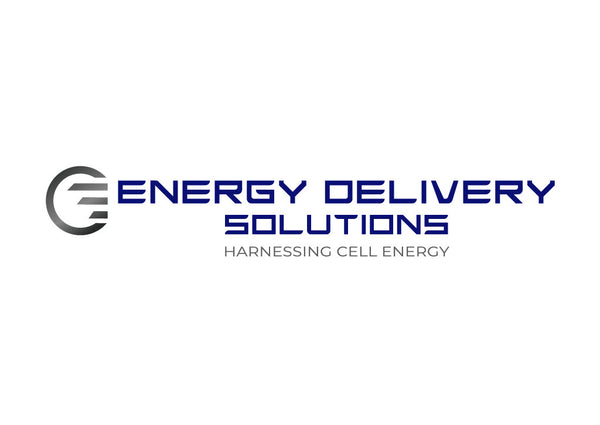Authors: William Ehringer, Ph.D., Kristyn Smith MEng
It is the beating heart that symbolizes life for animals, but it also shows the frailty of life. If the heart has a blockage in one of its arteries, the heart can stop beating. Without blood flow to the rest of the body, the cells do not receive oxygen or nutrients, cannot make adenosine-triphosphate (i.e. ATP), which leads to cell death. Thus, while we think of a stopped heart as a sign of death, in fact it is the loss of ATP that truly signifies death of the animal. This begs the question that if ATP is so important to maintain life, then why not find a way to increase ATP levels in the body?

ATP levels in the body are very tightly controlled.1 Our cells are constantly receiving feedback on ATP levels and when it decreases, cells accelerate the rate of ATP production to meet demand.2 Cells can adjust ATP levels by increasing the rate of glucose entry and also by feedback on important steps in the ATP production process.3 Our heart will beat faster and our lungs will transfer more oxygen to the bloodstream to accommodate ATP demand.3 But what if there is a massive decrease in blood flow? In the case of trauma or hemorrhagic shock (i.e. bleeding out), current medical practice is to infuse large volumes of crystalloid solutions to reestablish and maintain blood pressure that accounts for blood volume loss. However, even if blood pressure is reestablished, patients can still have negative side effects from the shock itself. Zakaria et al explains that there is a significant risk for these patients developing multi-system organ failure (MOF) from the worsening metabolic effects due to ATP depletion from the initial shock and subsequent vascular collapse.4 What is needed is a medical intervention that can be used temporarily to provide the ATP that cells need until blood flow and oxygen can be restored to normal levels. While it might sound easy to infuse the body with ATP, the answer is, it is not that simple.
ATP is found at high concentrations (roughly 10 mM) inside of cells, but the levels of ATP outside of cells is very small (roughly 10 nm).5 The reason is that ATP is rapidly degraded to adenosine by enzymes on the outside of cells.5 Adenosine has no phosphates and thus has no energy it can provide for the millions of cellular processes. In addition, ATP is a very water soluble molecule, and as such, does not penetrate rapidly enough through the cell membrane in order to get inside of the cell where it is needed. This means that providing the ATP molecule directly to combat decreased blood flow or oxygen would not work as the ATP is degraded and not brought into the cell where is is needed. What is needed is a way to protect the ATP from enzyme degradation and to increase its transfer inside of the cell.

Figure 1 - Extracellular ATP signaling demonstrated an epithelial cell model, from [5]
Lipid vesicles offer an attractive way to limit the enzymatic degradation of ATP and also increase the transfer of ATP inside cells. Early attempts to use lipid vesicles to contain ATP and use it to combat low oxygen or blood flow had limited success.6,7,8 The major problem was the design of the lipid vesicles, which were made to be stable and large with multiple lipid bylayers to contain and encapsulate the ATP. While these large and stable lipid vesicles could contain the ATP, they were very slow in delivering ATP to the cell. The rate of ATP delivery is critical to cell survival. Slow ATP delivery results in cells not receiving enough ATP to meet metabolic demands. What is needed is a faster method of ATP delivery.

Figure 2 – Relative Kinetics of bilayer folding affect size and lamellarity of lipid vesicles, from [9]
Lipid vesicle properties and function are dictated by several major factors: composition, size, shape, lamellarity, surface charges, and processing methods.9,10 By changing the composition of the lipid vesicle to include substances that create unstable membranes, the lipid vesicle is in a higher potential energy state.10, 11, 12, 13 Examples of this include adding non-bilayer forming lipids, hexagonal forming lipids, and dissimilar size and types of lipids.14 The addition of these lipids to a stable lipid vesicle, results in a vesicle that wants to fuse with other membranes.13 In addition, by decreasing the size of the lipid vesicle, the radius of curvature increases, which imparts additional stored energy to the stable lipid vesicle.10, 13 By coupling composition and size, the rate of lipid vesicle fusion can be adjusted. Membrane fusion occurs on the microsecond scale, which is thousands of times faster than stable lipid vesicle absorption by cells.15, 16, 17

Figure 3 – Fusion of a vesicle with a diameter of 28 nm to a planar membrane with a projected area of (50 nm)2, From [16]
By coupling what we know about ATP and by manipulating the characteristics of lipid vesicles, we can encapsulate ATP and deliver it directly to cells and tissues in a manner that meets the metabolic requirements of the cells/tissues. This bypasses the requirements of the cell to produce ATP in situ and can provide an energetic boost during periods of low bloodflow or low oxygen. By providing ATP in this way, cells can not only meet their metabolic demands but also avoid undergoing prolonged ischemic stress. Utilizing this technology could pave the way to new approaches in medicine.

